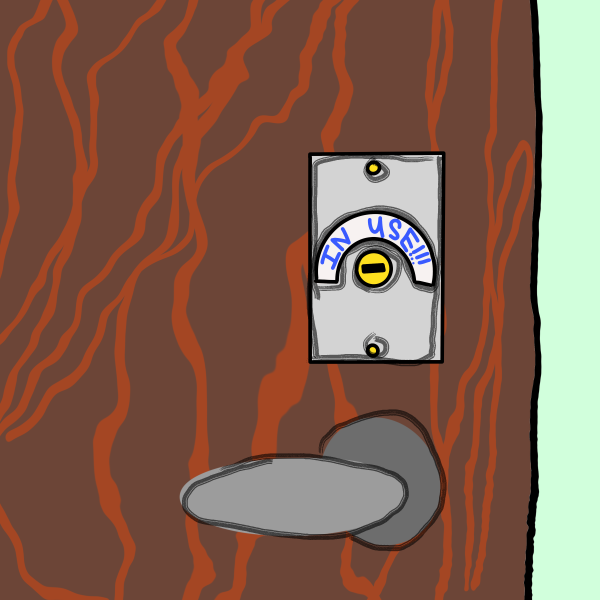Feeling the Beat
Findings on music, empathy and your brain.
October 6, 2021
I’ve been told that music is a great study aid, though for me, it always ends in distraction (a side effect, perhaps, of being a music major). While music is a popular tool for studying, it also has a frequent use when we aren’t working to study anything–when we simply want to reduce stress and let our mind wander. A few years ago a group of researchers from Germany and Norway decided to take a look at the use of music for mind-wandering, and their findings were much farther-ranging than I had initially expected.
We say music is good for mind wandering, but what exactly is this “mind-wandering” anyway? We can think of it as a form of open thought; or as the researchers put it, “self-generated thought, which involves overcoming the constraints of the ‘here and now’ by immersing in one’s own stream of consciousness.” This type of thought is common to our species, representing almost a basic need for our brains. Further, this time of self-reflection often touches on issues we hold nearest: “about matters of self-importance, social relationships, future planning, and autobiographical memories.” It is easy to see how pivotal mind-wandering can be in the college years. But why do we use music to mind-wander? That’s what the researchers wanted to find out.
The group had people listen to both sad and happy music, and found sad music was substantially better for activities of mind-wandering, with it being more self-referential. This much might be intuitive: we tend not to contemplate deep truths of our existence while rocking to Pat Benatar. However, they also found that sad music affects the emotional outcome of our mind-wandering. This is key: given the sensitive and personal topics we touch on during self-reflection, the exercise sans music has been linked at times to greater unhappiness – but when guided by sad music, the self-reflection becomes more enjoyable! Participants’ mind-wandering facilitated by sad music became “melancholic but pleasurable.” What is going on?
When researchers peeked under the hood, they found not one “music area” of the brain glowing, but rather an entire network of brain patches lighting up and talking to each other. One area in particular caught my attention: the dmPFC.
I was fascinated when I first heard about this study, which occurred my first year at Hamline, and I even presented the results to my FYSEM. At the time, I was especially interested in a spot in the middle front of your brain, the dmPFC (why an abbreviation, you ask? Because the full name, dorsal medial prefrontal cortex, uses 10% of my word count every time I type it, and makes my readers gag). Normally, the dmPFC is used for empathy–specifically, for intuiting others’ mental states. When you see someone looking sad and feel prompted to say something kind to them, chances are your dmPFC is at work. Why is this socially-driven part of the brain at work when you are looking inward? Could there be a connection? Unfortunately, my first-year self had no way of knowing unless the above researchers conducted another study, say, on the connection between sad music and empathy.
Fast forward to this year: the same group published another study. Their topic? Sad music and empathy.
In the new study, the researchers tested participants for empathy levels, and had them listen to sad music. They found the high-empathy individuals experienced greater emotional impact and enjoyment from the sad music compared to their less-empathetic counterparts. Not only so, these individuals held a more compassionate attitude towards the sad music. Their dmPFC was lighting up, while the areas of the brain for empathy of pain were peacefully quiet.
The connection with sad music is there, but why with the dmPFC? Where is the social aspect coming into play? When you listen to sad music, your brain – specifically the dmPFC – is working to understand and empathize with the message of the music. Your brain is treating the music like the emotions of another person, and it is enjoying being able to harmonize with the mood. The researchers noted it’s similar to the enjoyment from putting yourself in the shoes of a novel’s protagonist; only now, it is your own story unfolding. Your brain is working to understand the music, and in the process, understand yourself.
If I’ve learned anything from my investigation of this study, I learned that it’s never a bad idea to use some somber music to let your mind wander. I’d encourage you to dedicate some time this week to do the same– your brain is more than ready to help you feel the beat.
Studies referenced:
Taruffi, L., Pehrs, C., Skouras, S., & Koelsch, S. (2017). Effects of sad and happy music on mind-wandering and the default mode network. Scientific reports, 7(1), 1-10.
Taruffi, L., Skouras, S., Pehrs, C., & Koelsch, S. (2021). Trait Empathy Shapes Neural Responses Toward Sad Music. Cognitive, Affective, & Behavioral Neuroscience, 21(1), 231-241.






